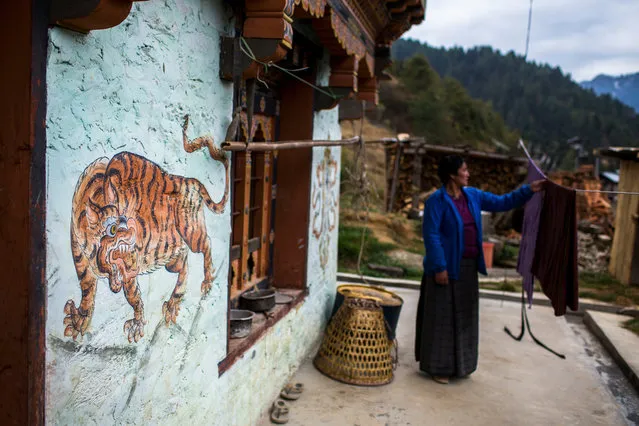
Rare images of wild tigers in Bhutan, captured by camera traps, show tigers and other animals using high-altitude wildlife corridors which are lifelines to isolated tiger populations and critical to genetic diversity, conservation and growth. Here: A local house, painted with tiger iconography, near Wangchuck Centennial park, in Sephu Gewog village. Tigers are one of the four animal protectors in Bhuddhism and their images can been seen adorning houses throughout Bhutan. (Photo by Emmanuel Rondeau/WWF UK/The Guardian)
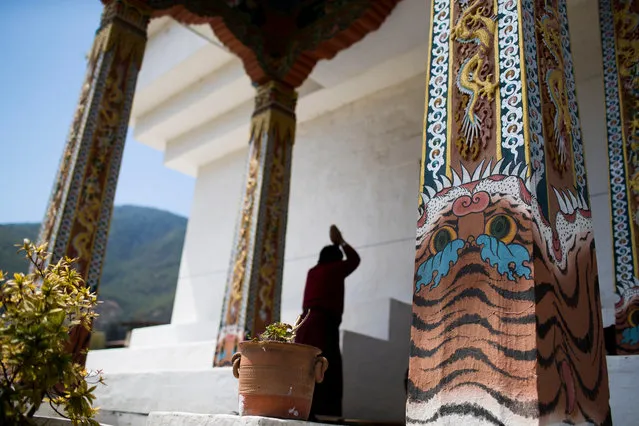
A man prays at the Memorial Stupa in capital Thimphu. All columns surrounding the stupa feature tigers. (Photo by Emmanuel Rondeau/WWF UK/The Guardian)
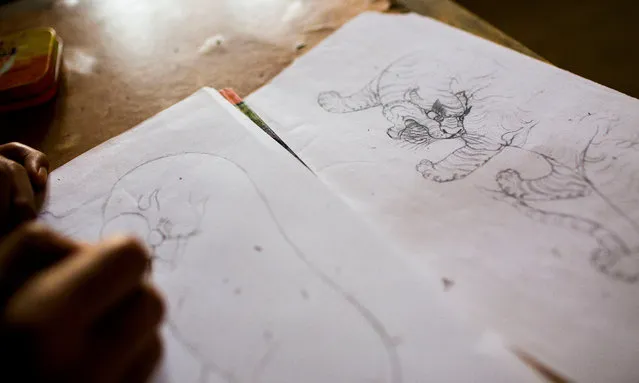
Tiger sketches by a monk at the Tashi Choling monastery in Kanglung, Bhutan. (Photo by Emmanuel Rondeau/WWF UK/The Guardian)
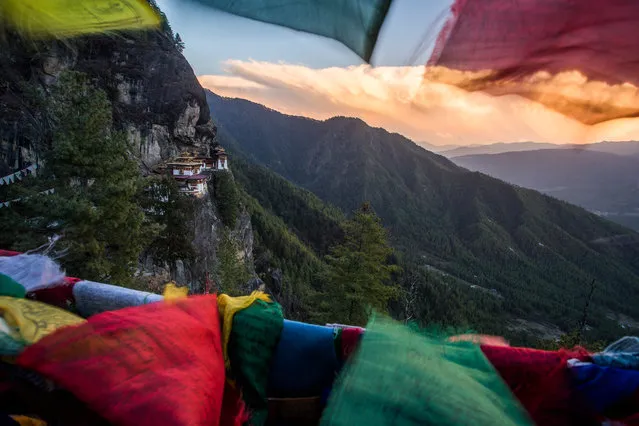
View of Paro Taktsang (Tiger’s Nest) monastery at sunset. According to a legend, Padmasambhava (Guru Rinpoche, an eighth-century Indian Buddhist master) flew to this location from Tibet on the back of a tigress from Khenpajong. This place was consecrated to tame the Tiger demon. (Photo by Emmanuel Rondeau/WWF UK/The Guardian)
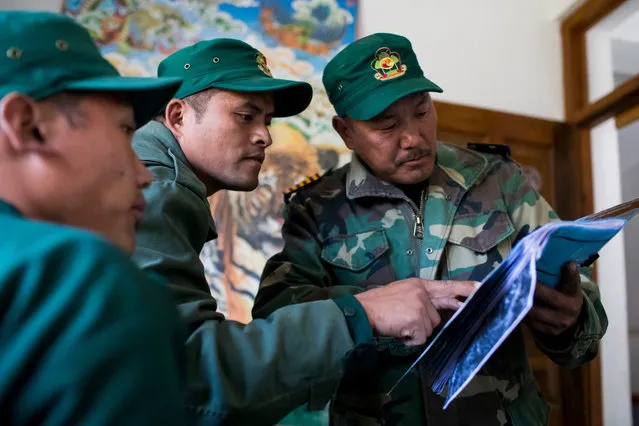
Government rangers at Jigme Singye Wangchuck national park study images of tigers captured by camera traps. (Photo by Emmanuel Rondeau/WWF UK/The Guardian)
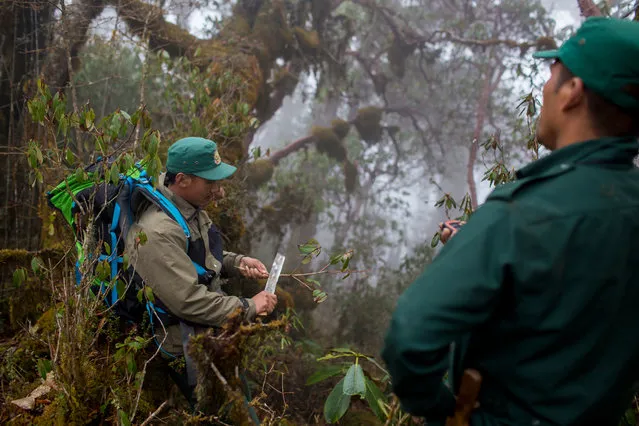
Rangers patrolling in wildlife corridor eight in central Bhutan. (Photo by Emmanuel Rondeau/WWF UK/The Guardian)
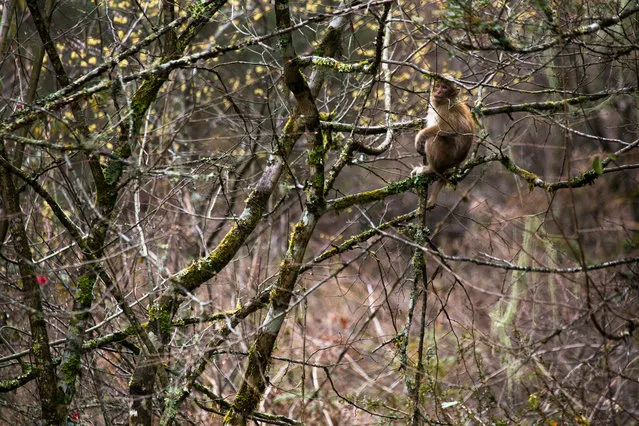
An Assam macaque (Macaca assamensis) in woodland area of Trongsa, Bhutan. (Photo by Emmanuel Rondeau/WWF UK/The Guardian)
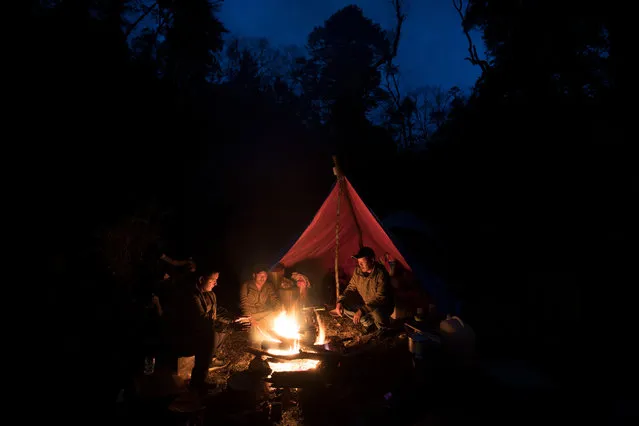
WWF staff and government forest rangers camping in wildlife corridor eight in northern Bhutan. (Photo by Emmanuel Rondeau/WWF UK/The Guardian)
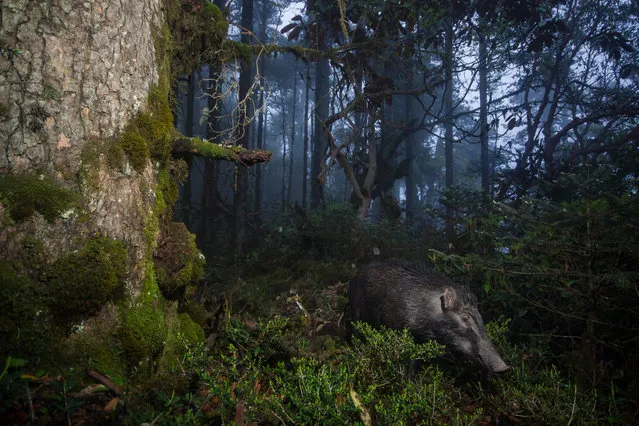
A wild boar (Sus scrofa) captured by camera trap in corridor eight in Trongsa, Bhutan. (Photo by Emmanuel Rondeau/WWF UK/The Guardian)

A wild Bengal tiger (Panthera tigris tigris) captured on a camera trap in corridor eight at an altitude of 3,540 metres in Trongsa, Bhutan. (Photo by Emmanuel Rondeau/WWF UK/The Guardian)

A takin (Budorcas taxicolor tibetana) shows up on the camera trap. (Photo by Emmanuel Rondeau/WWF UK/The Guardian)
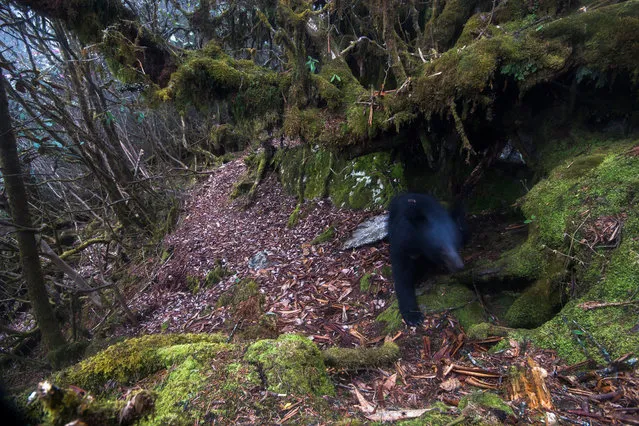
Next it’s a Himalayan black bear (Ursus thibetanus laniger) ... (Photo by Emmanuel Rondeau/WWF UK/The Guardian)
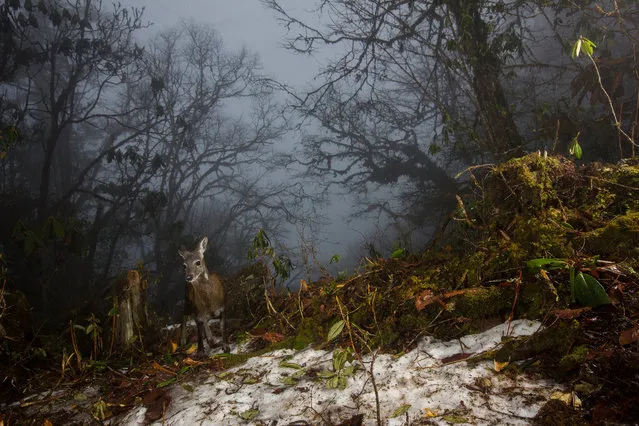
... and then a musk deer. (Photo by Emmanuel Rondeau/WWF UK/The Guardian)

Finally, a wild tiger makes a grand entry and the camera trap in corridor eight takes a perfect snap. (Photo by Emmanuel Rondeau/WWF UK/The Guardian)
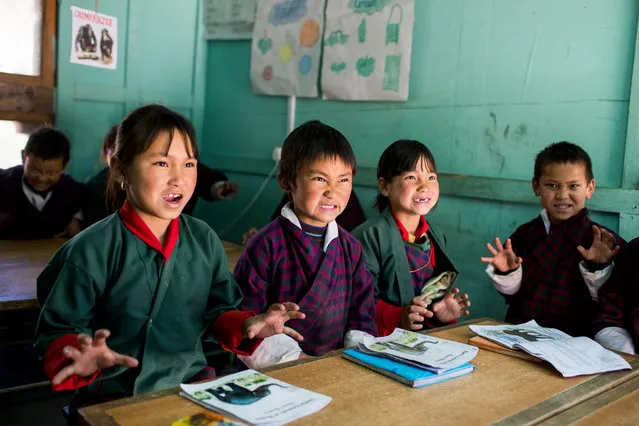
Local school children take part in ecology educational lessons in Sephu Gewog village in Wangdue Phodrang district of Bhutan. (Photo by Emmanuel Rondeau/WWF UK/The Guardian)

They make charts about the prey-base of tigers. (Photo by Emmanuel Rondeau/WWF UK/The Guardian)
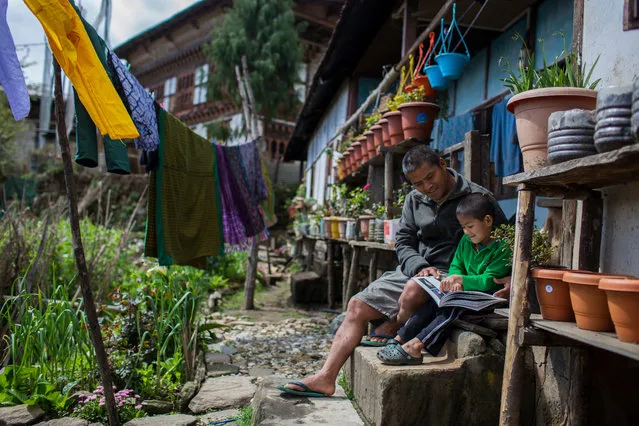
Dorji Duba, government ranger at Jigme Singye Wangchuck national park, at home with his son Yesel. (Photo by Emmanuel Rondeau/WWF UK/The Guardian)
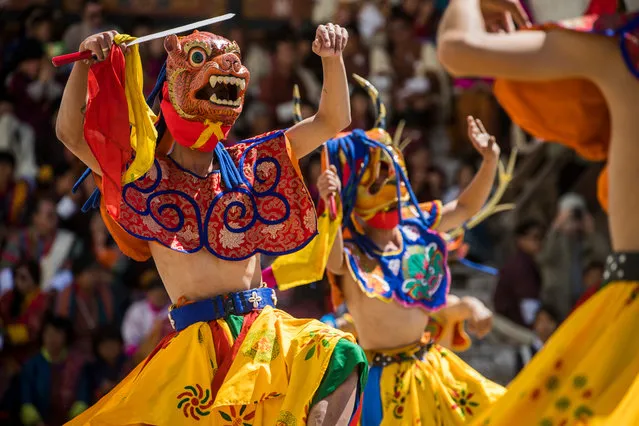
The Tsechu festival in Paro. Tshechus are religious festivals involving large social gatherings that bring together people from remote villages in Bhutan. The focal point of Tshechus are “cham dances”, involving masked dancers who are often seen wearing tiger masks. (Photo by Emmanuel Rondeau/WWF UK/The Guardian)
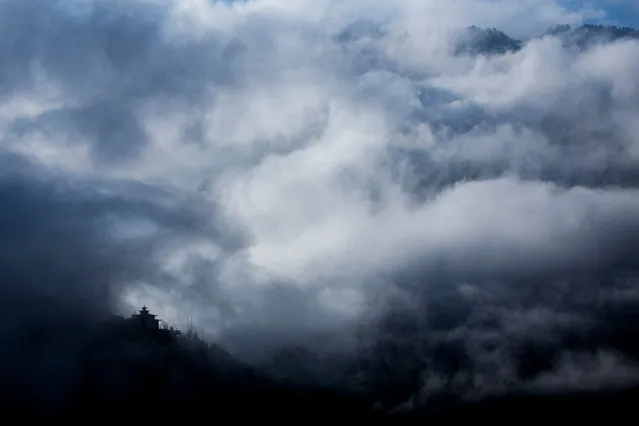
Silhouette of a monastery in Trongsa, Bhutan. (Photo by Emmanuel Rondeau/WWF UK/The Guardian)
02 Aug 2017 06:49:00,
post received
0 comments
